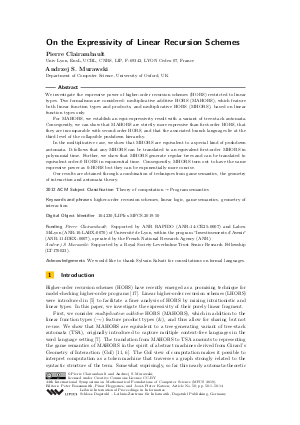LIPIcs.MFCS.2019.50.pdf
- Filesize: 0.67 MB
- 14 pages

 Creative Commons Attribution 3.0 Unported license
Creative Commons Attribution 3.0 Unported license



















Feedback for Dagstuhl Publishing